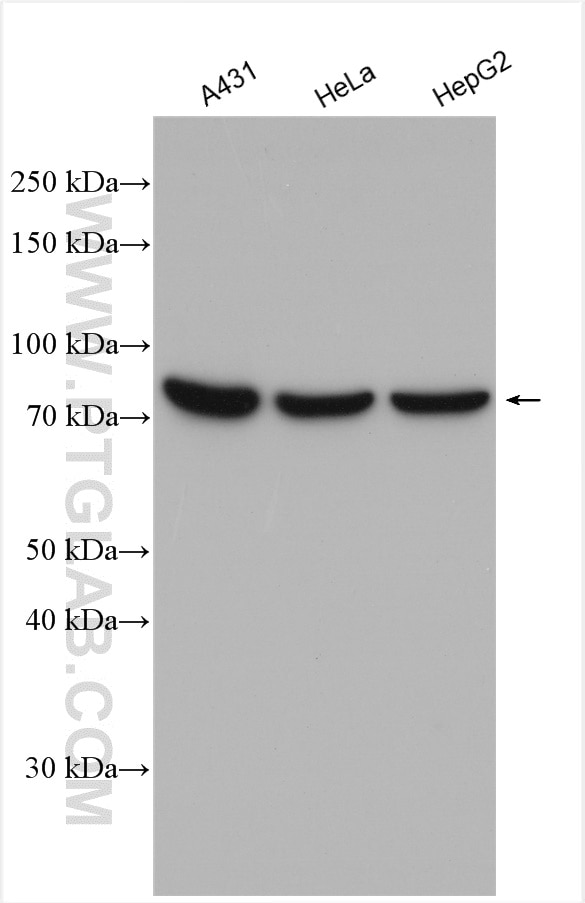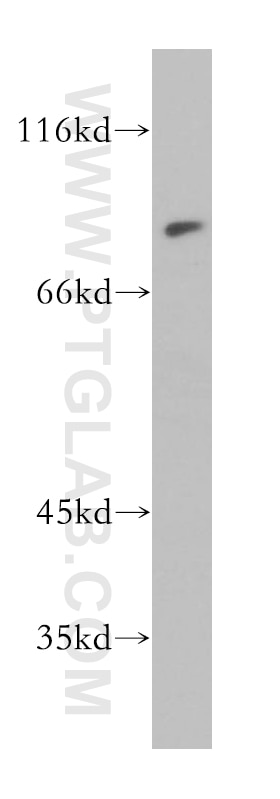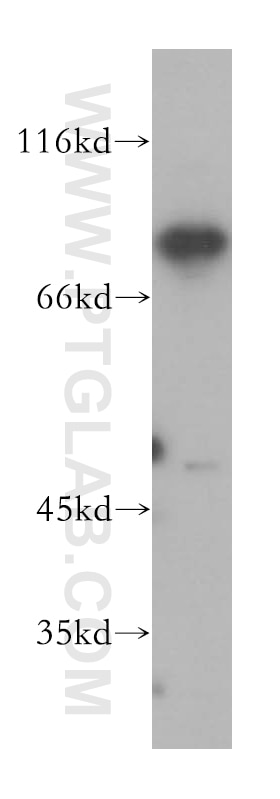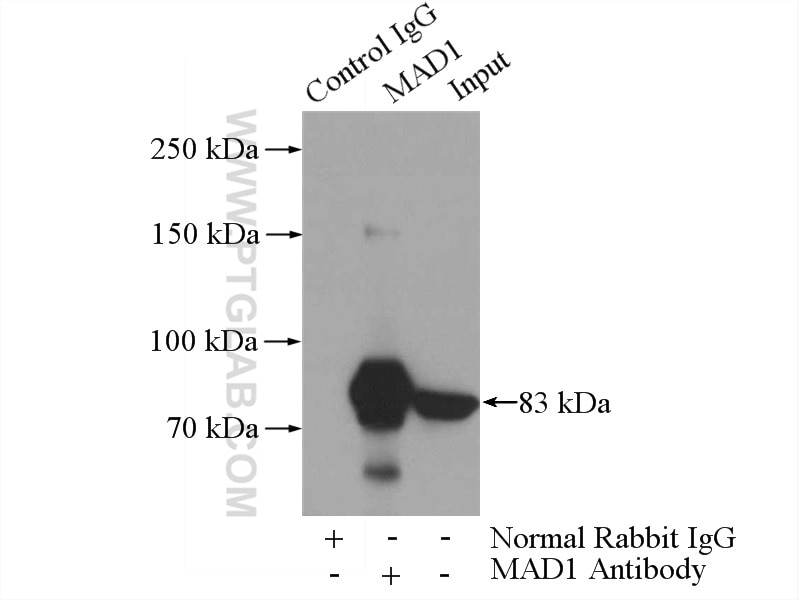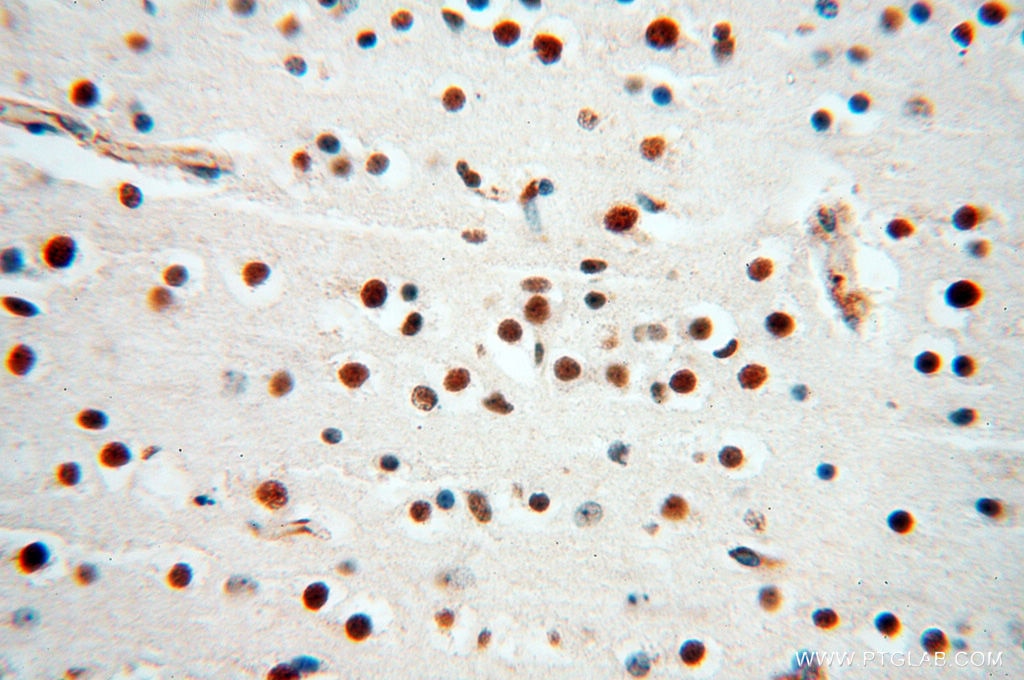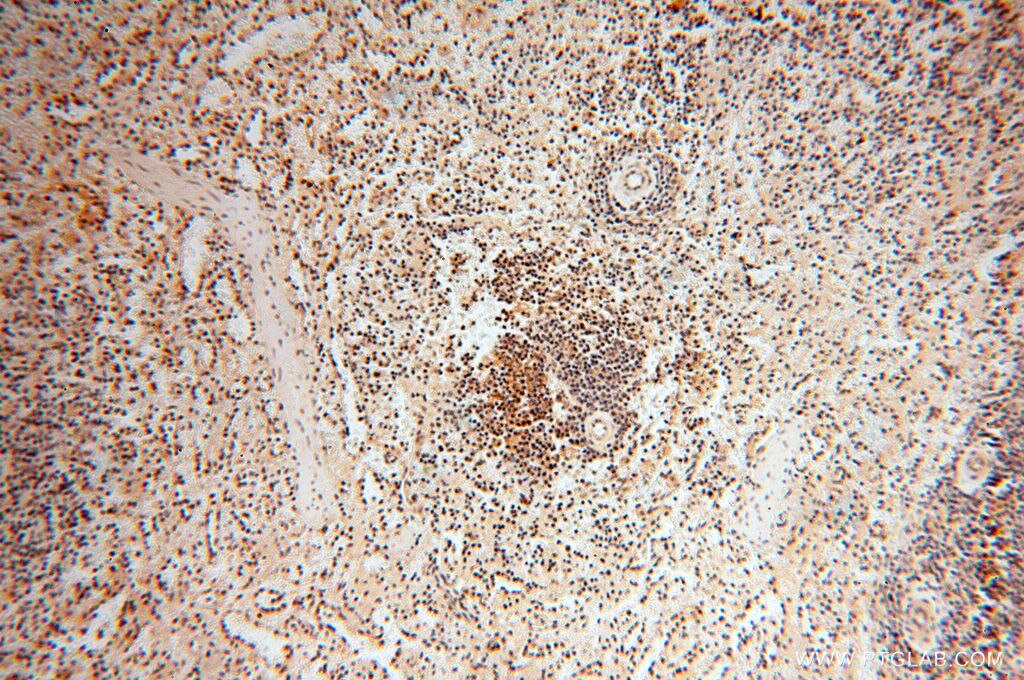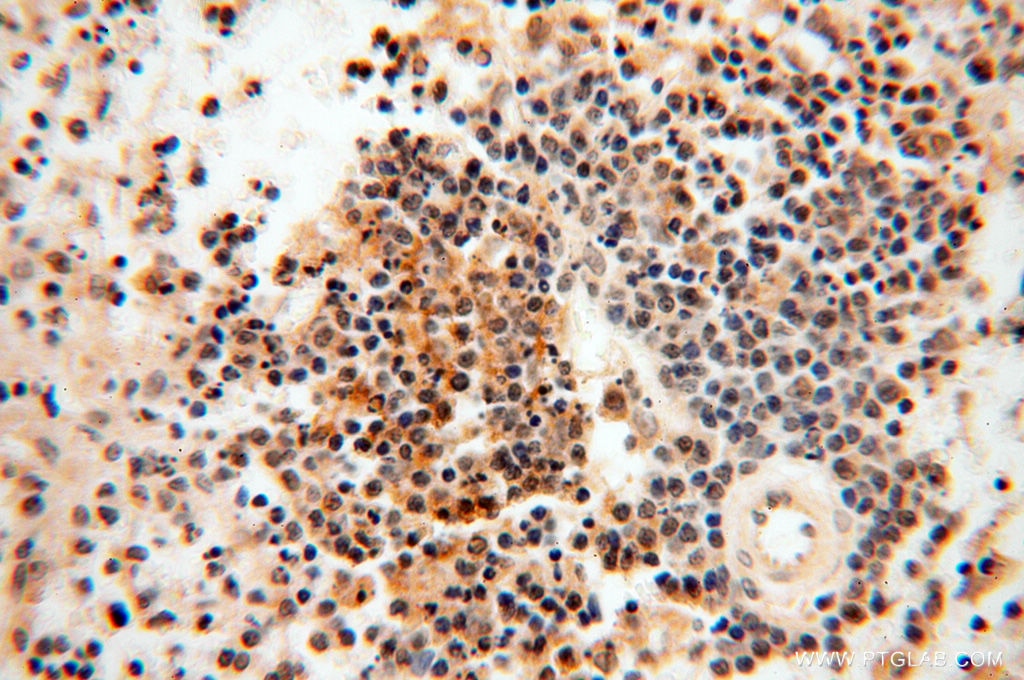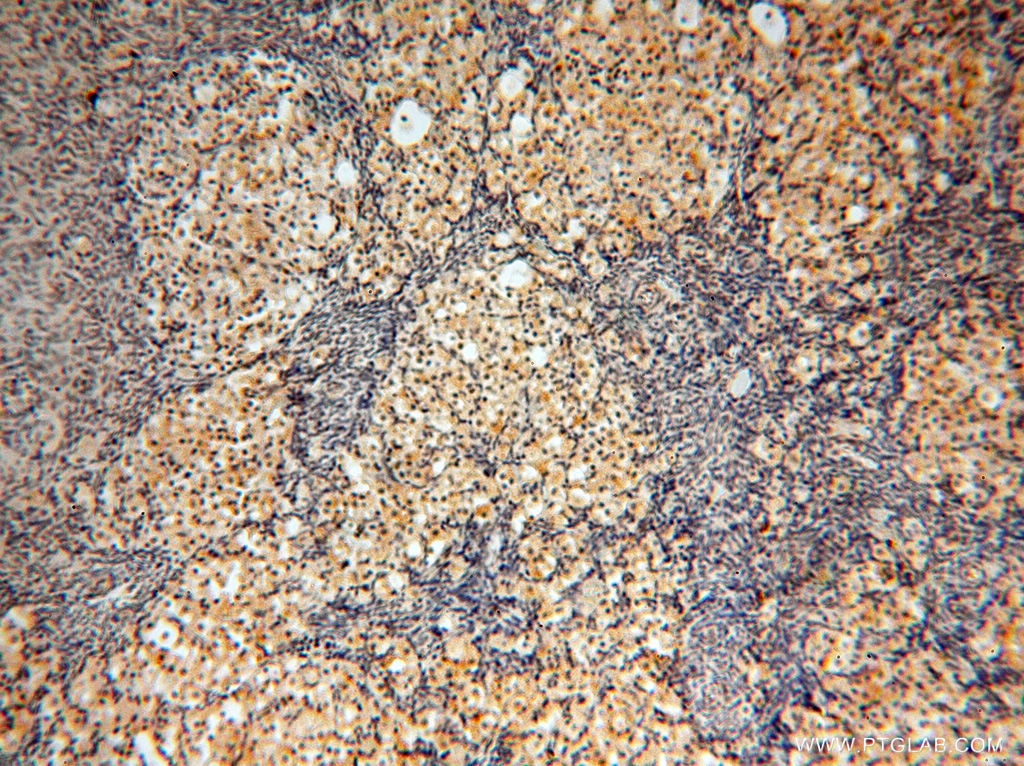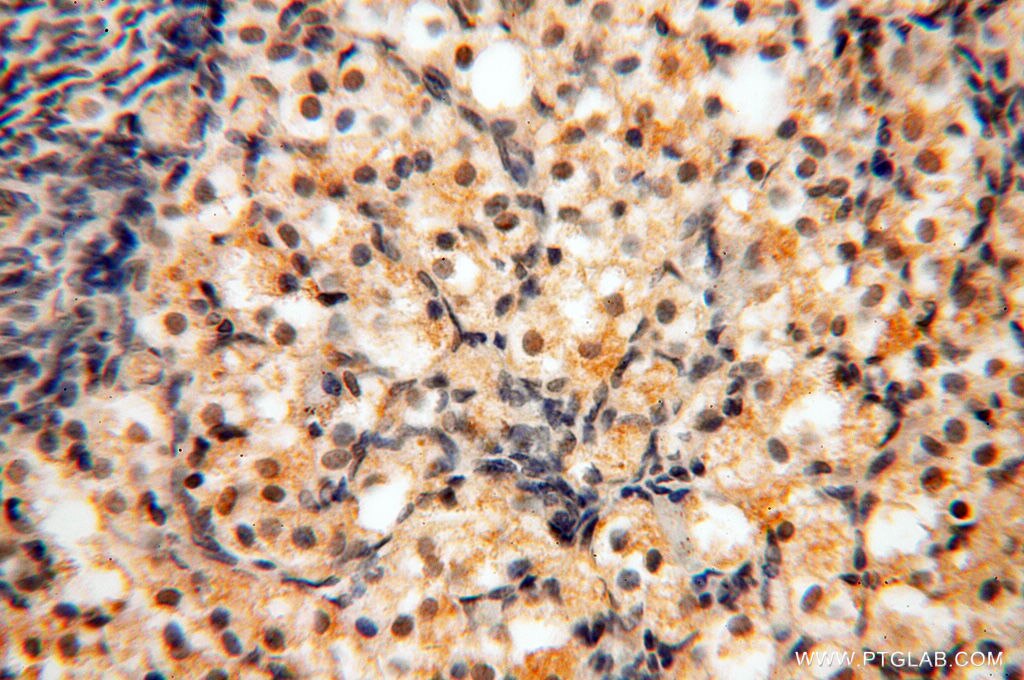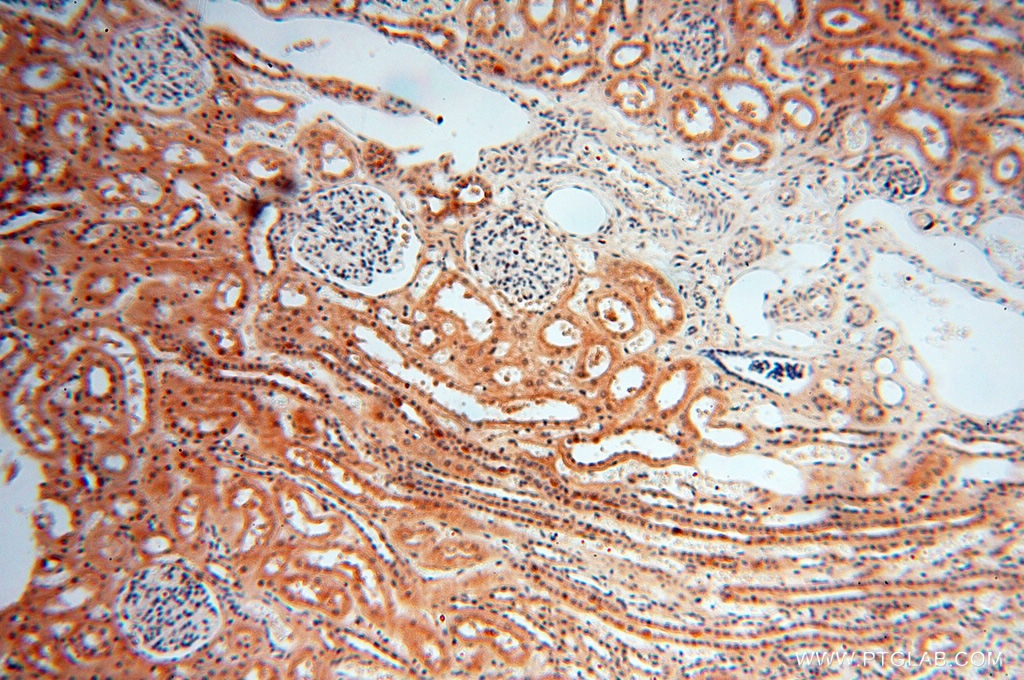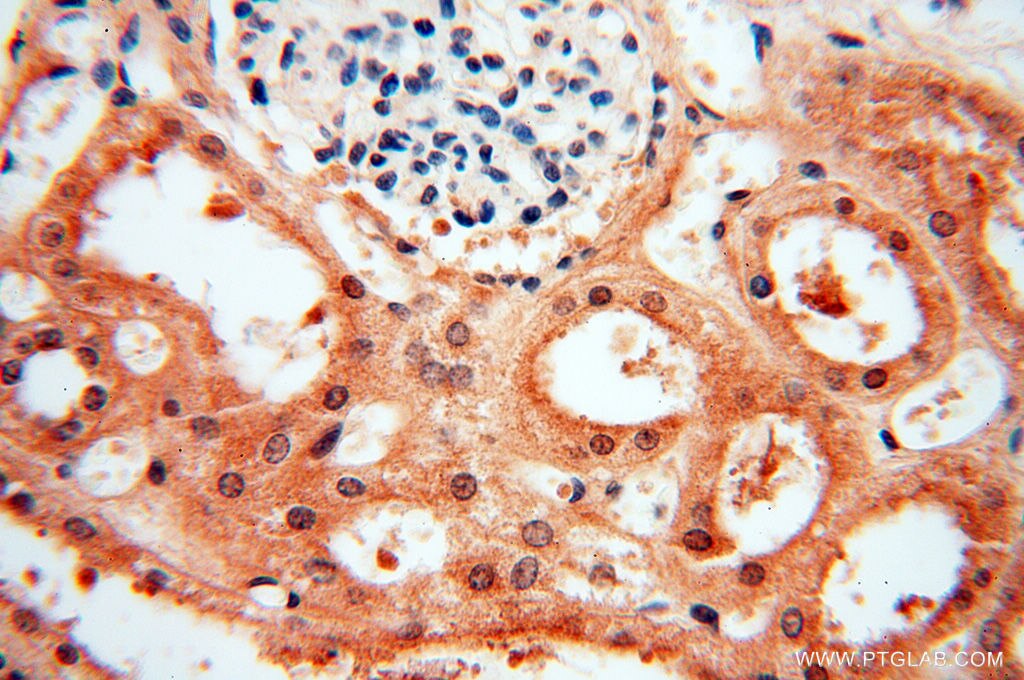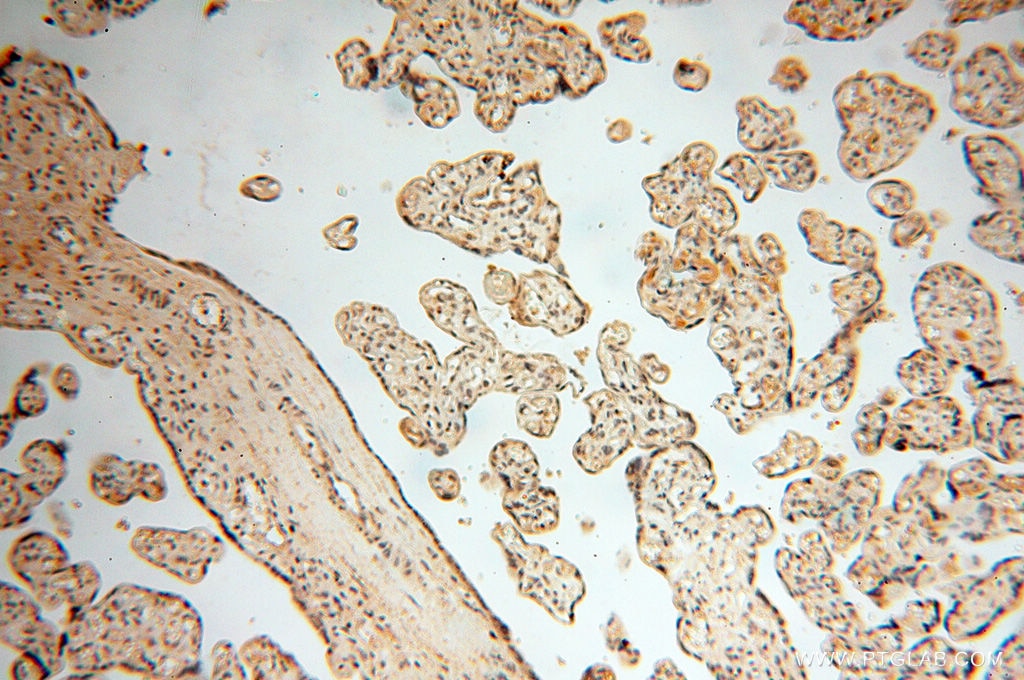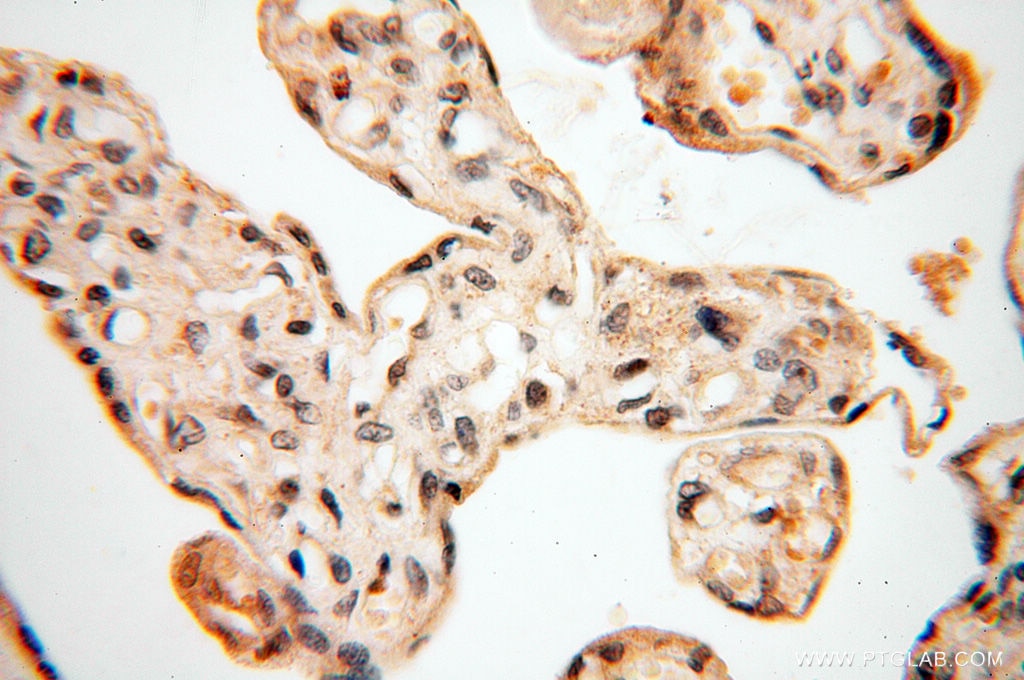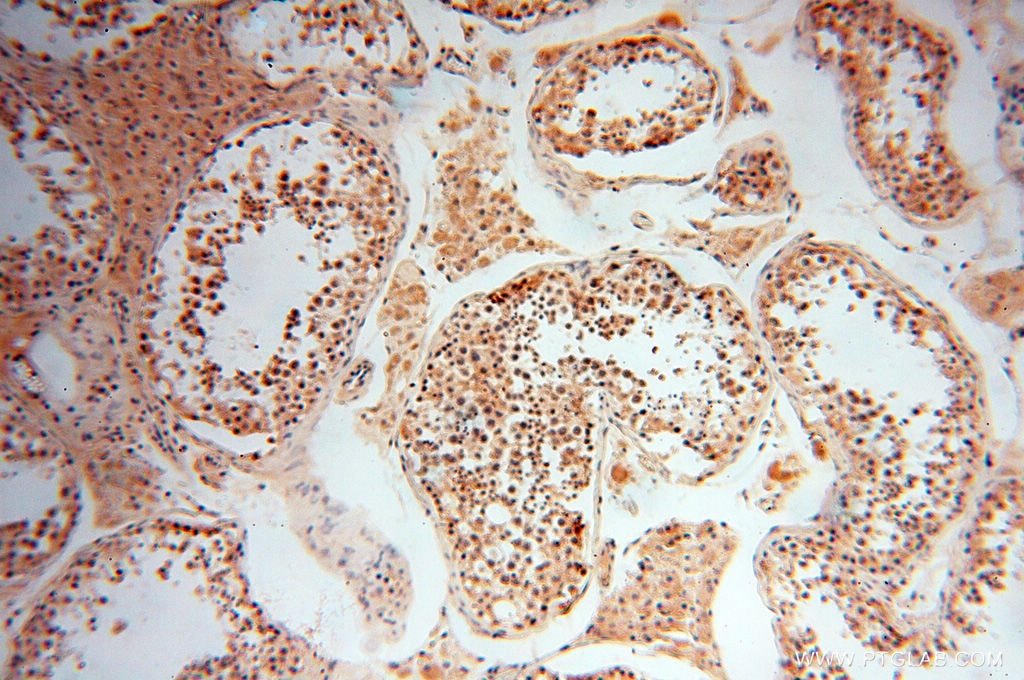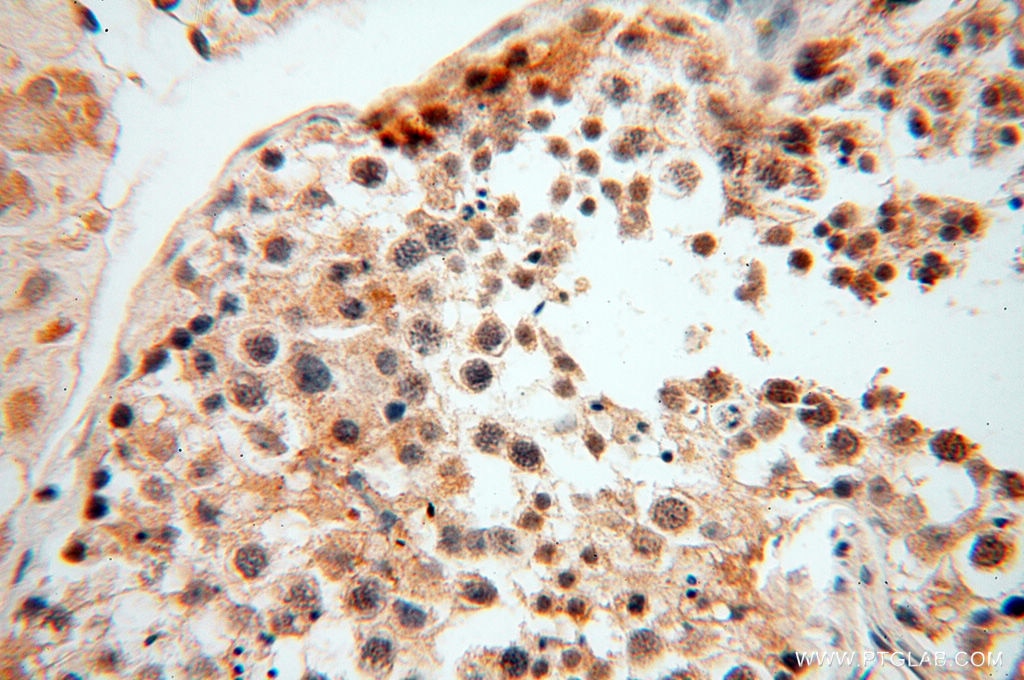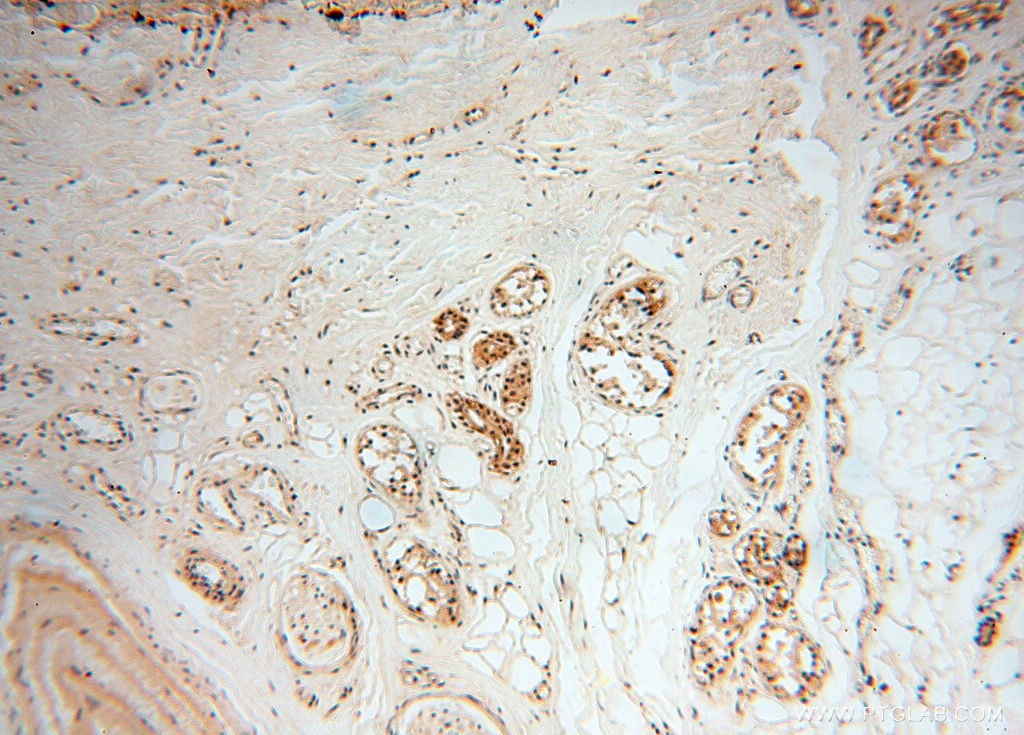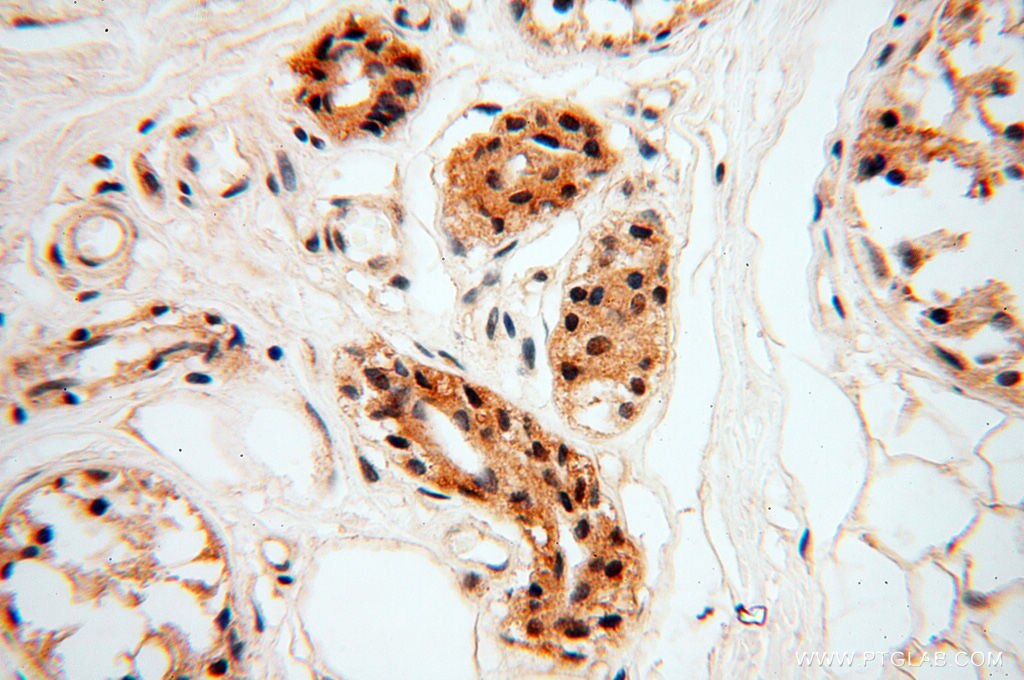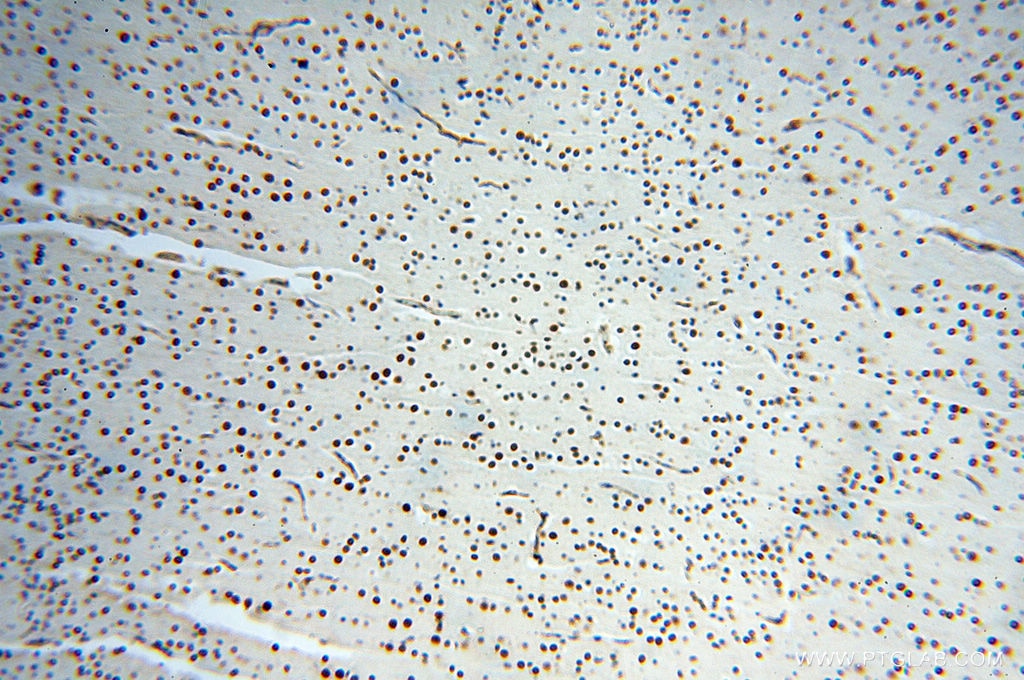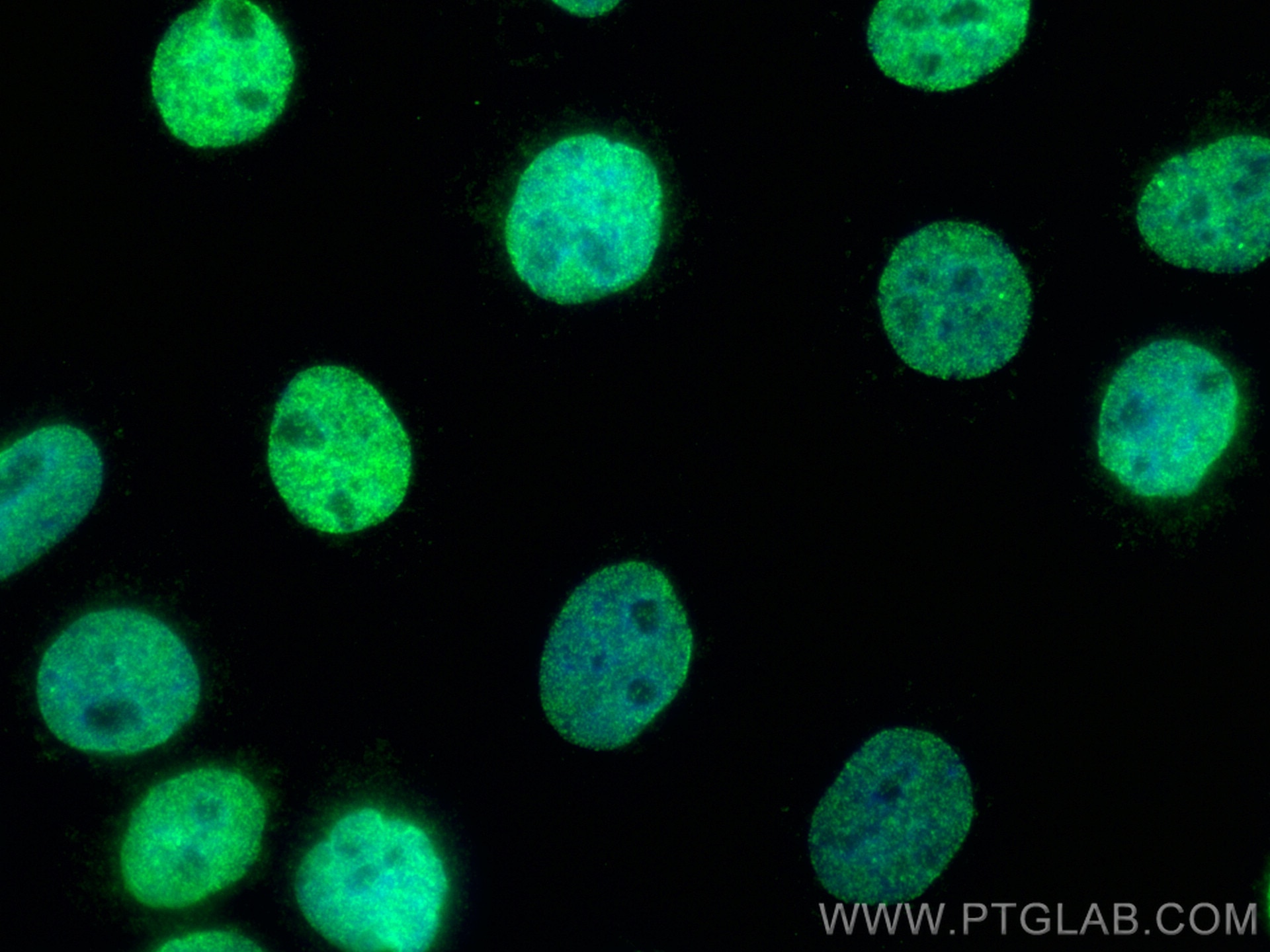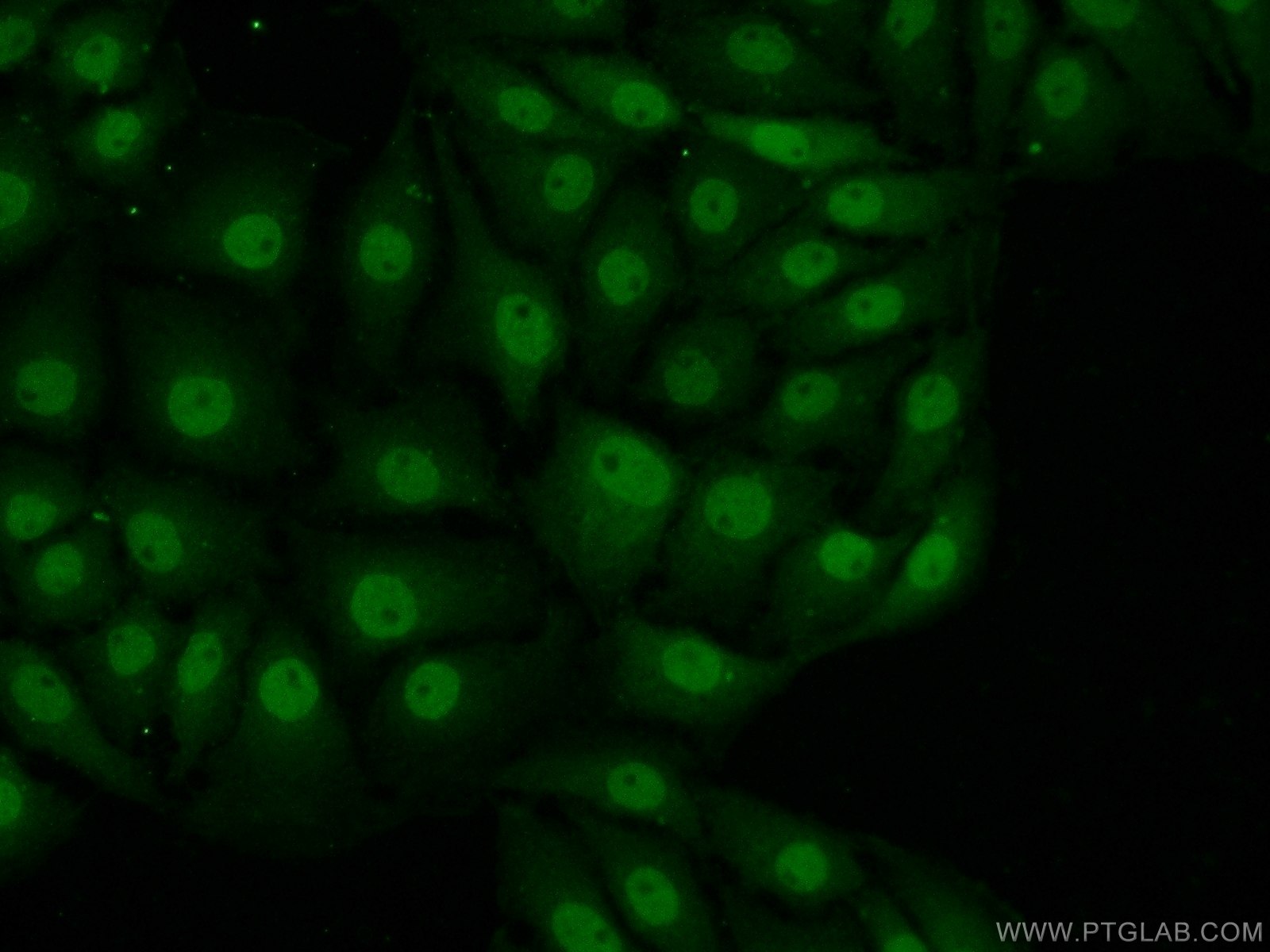Anticorps Polyclonal de lapin anti-MAD1
MAD1 Polyclonal Antibody for WB, IHC, IF/ICC, IP, ELISA
Hôte / Isotype
Lapin / IgG
Réactivité testée
Humain et plus (1)
Applications
WB, IHC, IF/ICC, IP, ELISA
Conjugaison
Non conjugué
N° de cat : 18322-1-AP
Synonymes
Galerie de données de validation
Applications testées
| Résultats positifs en WB | cellules A431, cellules HeLa, cellules HepG2, cellules Raji, tissu cérébral humain |
| Résultats positifs en IP | cellules HeLa |
| Résultats positifs en IHC | tissu cérébral humain, tissu cutané humain, tissu ovarien humain, tissu placentaire humain, tissu rénal humain, tissu splénique humain, tissu testiculaire humain il est suggéré de démasquer l'antigène avec un tampon de TE buffer pH 9.0; (*) À défaut, 'le démasquage de l'antigène peut être 'effectué avec un tampon citrate pH 6,0. |
| Résultats positifs en IF/ICC | cellules A431, cellules SH-SY5Y |
Dilution recommandée
| Application | Dilution |
|---|---|
| Western Blot (WB) | WB : 1:2000-1:16000 |
| Immunoprécipitation (IP) | IP : 0.5-4.0 ug for 1.0-3.0 mg of total protein lysate |
| Immunohistochimie (IHC) | IHC : 1:20-1:200 |
| Immunofluorescence (IF)/ICC | IF/ICC : 1:50-1:500 |
| It is recommended that this reagent should be titrated in each testing system to obtain optimal results. | |
| Sample-dependent, check data in validation data gallery | |
Applications publiées
| WB | See 6 publications below |
| IF | See 2 publications below |
Informations sur le produit
18322-1-AP cible MAD1 dans les applications de WB, IHC, IF/ICC, IP, ELISA et montre une réactivité avec des échantillons Humain
| Réactivité | Humain |
| Réactivité citée | Humain, souris |
| Hôte / Isotype | Lapin / IgG |
| Clonalité | Polyclonal |
| Type | Anticorps |
| Immunogène | MAD1 Protéine recombinante Ag13171 |
| Nom complet | MAD1 mitotic arrest deficient-like 1 (yeast) |
| Masse moléculaire calculée | 83 kDa |
| Poids moléculaire observé | 83 kDa |
| Numéro d’acquisition GenBank | BC009964 |
| Symbole du gène | MAD1 |
| Identification du gène (NCBI) | 8379 |
| Conjugaison | Non conjugué |
| Forme | Liquide |
| Méthode de purification | Purification par affinité contre l'antigène |
| Tampon de stockage | PBS with 0.02% sodium azide and 50% glycerol |
| Conditions de stockage | Stocker à -20°C. Stable pendant un an après l'expédition. L'aliquotage n'est pas nécessaire pour le stockage à -20oC Les 20ul contiennent 0,1% de BSA. |
Informations générales
MAD1L1 is a component of the spindle-assembly checkpoint that prevents the onset of anaphase until all chromosomes are properly aligned at the metaphase plate. It recruits MAD2L1 to unattached kinetochores. Also it is required for anchoring MAD2L1 to the nuclear periphery. In addition, it binds to the TERT promoter and represses telomerase expression, possibly by interfering with MYC binding [PMID:10049595, 12837246].
Protocole
| Product Specific Protocols | |
|---|---|
| WB protocol for MAD1 antibody 18322-1-AP | Download protocol |
| IHC protocol for MAD1 antibody 18322-1-AP | Download protocol |
| IF protocol for MAD1 antibody 18322-1-AP | Download protocol |
| IP protocol for MAD1 antibody 18322-1-AP | Download protocol |
| Standard Protocols | |
|---|---|
| Click here to view our Standard Protocols |
Publications
| Species | Application | Title |
|---|---|---|
Cell Death Dis Genome-wide CRISPR screen identifies BUB1 kinase as a druggable vulnerability in malignant pleural mesothelioma | ||
Cell Cycle Nuclear interactor of ARF and Mdm2 regulates multiple pathways to activate p53. | ||
BMB Rep TCP10L synergizes with MAD1 in transcriptional suppression and cell cycle arrest through mutual interaction. | ||
Sci Adv Biallelic germline mutations in MAD1L1 induce a syndrome of aneuploidy with high tumor susceptibility | ||
Aging (Albany NY) The HNF4A-CHPF pathway promotes proliferation and invasion through interactions with MAD1L1 in glioma |
